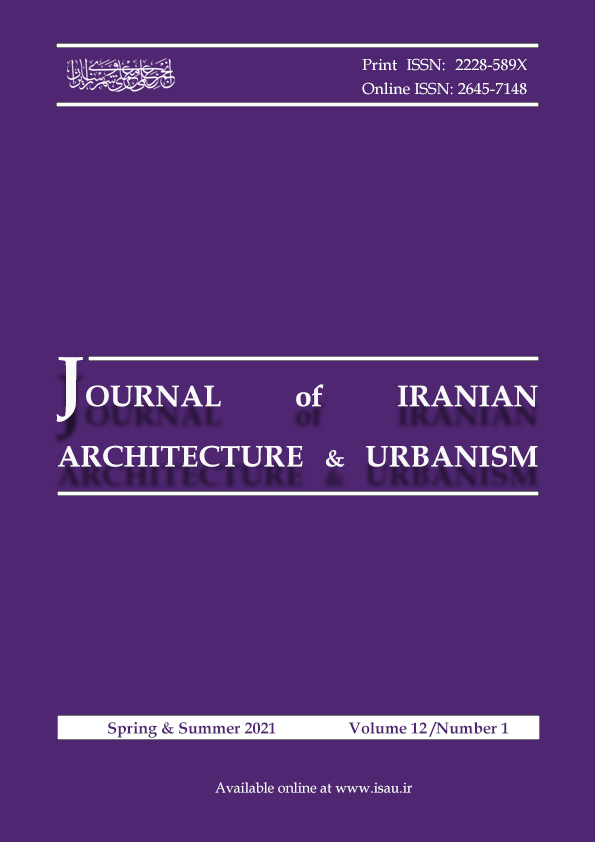Document Type : Original Research Paper
Authors
1 Ph.D. in Energy & Architecture, Faculty of Architecture and Urban Planning, University of Art, Tehran, Iran.
2 Associate Professor, Faculty of Architecture and Urban Planning, University of Art, Tehran, Iran.
3 M.Sc. of Energy &Architecture, Faculty of Architecture and Urban Planning, University of Art, Tehran, Iran.
Abstract
Extended Abstract
Background and Objectives: The accurate prediction of the visual comfort zone in an indoor environment is difficult as it depends on so many parameters such as individual and environmental variables. It is important in large compact urban areas in which the density and shadow from neighboring buildings can limit the accessible daylighting in indoor spaces. Lighting is one of the most important environmental parameters in office spaces. The employees spend most of their hours in office spaces during the day, and most of their activities are based on receiving visual information from the surroundings. Besides, being satisfied with lighting conditions is one of the main elements that significantly affects the environment’s overall comfort level. Currently, in Iran, the visual comfort zone and the preferred illumination level are not defined for office spaces, and experts refer to the findings achieved in other countries. To assess the lighting in architectural spaces and define the conditions for conformity in many standards, the authors have used some metrics as the physical measures. Generally, there are static and dynamic metrics to evaluate various aspects of daylight. Static metrics, such as illuminance-based daylighting metrics and Daylight Factor (DF), are typically evaluated based on illuminance and have been used in building regulations for a long time. In most standards and codes, the minimum recommended illumination level for working planes in a regular office is 500 lx. Due to climatic and cultural differences, the findings of other countries may not be appropriate for Iran. On the other hand, many studies have been conducted to find an acceptable lighting level in offices; however, the results show the acceptable range for illuminance in different countries is not the same. So, this paper tries to investigate the satisfaction range with the illumination level in office spaces which architects and researchers could use. Therefore, a field measurement was conducted to evaluate the illumination levels, and to examine the effect of lighting conditions on employee level of satisfaction and perception of lighting level with actual illuminance levels in office spaces in Tehran, using both questionnaire and physical illuminance measurements.
Methods: The focus is on six office buildings in the metropolis of Tehran, Iran. The buildings were selected to consider different spaces in old and new buildings, one-story and high-rise buildings, open plan, and cubicle offices with varying orientations. The selected rooms were one, two- or multi-user offices, located on different floors, with various window orientations and an optional atrium/outside window. Fluorescent interior artificial lighting was used in all spaces with a color temperature between 4000K and 5000K. The survey involved 509 questionnaires (280 were filled out in summer and 229 in winter).
Findings: Most of the participants have spent at least three months in their offices and have been adapted to the environment. All participants were Iranians (to avoid the impact of occupants’ culture on lighting perception). Most of them reported that they spend more than 8 hours or between 6 to 8 hours in their offices during the day. Field measurement includes illuminance, temperature, and relative humidity. The questionnaires were filled out in 146 and 109 rooms in summer and winter, respectively. At the same time, while users completed the questionnaire, the physical parameters were measured. The Spearman rank correlation coefficient was applied for quantitative variables. By using a monotonic function, the Spearman rank correlation coefficient is a non-parametric measure that assesses statistical dependence between two variables to describe their relationship.
Conclusion: The results revealed that occupants were more satisfied with higher levels of illuminance. The measured illuminance is categorized into certain levels to investigate the acceptable range for the lighting level. For this purpose, the measured lighting level was classified into 14 ranges. The values of less than 300 lx are in the first category, higher than 900 lx are in the last category, and the values between these mentioned ranges are classified into 50 lx intervals. The highest satisfaction from the environmental lighting level is provided in the illuminance range between 600 to 649 lx. The illumination level above this range results in more satisfaction compared to illumination levels less than 550 lx. Thus, there is an optimal range of satisfaction with lighting level, and the preferred lighting comfort range for the investigated office spaces is between 600 to 649 lx. While the illumination level higher than 550 lx is acceptable for most of the occupants.
Graphical Abstract
Highlights
Keywords


